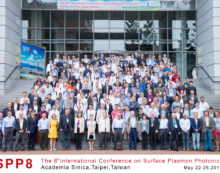Patent Lawyer Diary #122: Our Swiss partners



Gauge theories are fundamental to our understanding of interactions between the elementary constituents of matter as mediated by gauge bosons. However, computing the real-time dynamics in gauge theories is a notorious challenge for classical computational methods. This has recently stimulated theoretical effort, using Feynman’s idea of a quantum simulator, to devise schemes for simulating such theories on engineered quantum-mechanical devices,...
Gauge theories underpin the standard model of particle physics, but are difficult to study using conventional computational methods. An experimental quantum system opens up fresh avenues of investigation. See Letter p.516
Nature 534 480 doi: 10.1038/534480a

Making a qubit is easy. Controlling how they communicate, however... (credit: NSF)
There are many different schemes for making quantum computers work (most of them evil). But they pretty much all fall into two categories. In most labs, researchers work on what could be called a digital quantum computer, which has the quantum equivalent of logic...
Quantum mechanics can help to solve complex problems in physics and chemistry, provided they can be programmed in a physical device. In adiabatic quantum computing, a system is slowly evolved from the ground state of a simple initial Hamiltonian to a final Hamiltonian that encodes a computational problem. The appeal of this approach lies in the combination...
Spin models are the prime example of simplified many-body Hamiltonians used to model complex, strongly correlated real-world materials. However, despite the simplified character of such models, their dynamics often cannot be simulated exactly on classical computers when the number of particles exceeds a few tens. For this reason, quantum simulation of spin Hamiltonians using the tools of atomic and molecular physics has become a...
Spin models are the prime example of simplified many-body Hamiltonians used to model complex, strongly correlated real-world materials. However, despite the simplified character of such models, their dynamics often cannot be simulated exactly on classical computers when the number of particles exceeds a few tens. For this reason, quantum simulation of spin Hamiltonians using the tools of atomic and molecular physics has become a...

The five qubits in IBM's quantum computer. (credit: IBM)
In the wee hours of Wednesday morning, IBM gave an unwary world its first publicly accessible quantum computer. You might be worried that you can tear up your passwords and throw away your encryption, for all is now lost. However, it's probably a bit early to call time on the world...
Humans routinely solve problems of immense computational complexity by intuitively forming simple, low-dimensional heuristic strategies. Citizen science (or crowd sourcing) is a way of exploiting this ability by presenting scientific research problems to non-experts. ‘Gamification’—the application of game elements in a non-game context—is an effective tool with which to enable citizen scientists to provide solutions to research problems. The citizen science games Foldit, EteRNA...